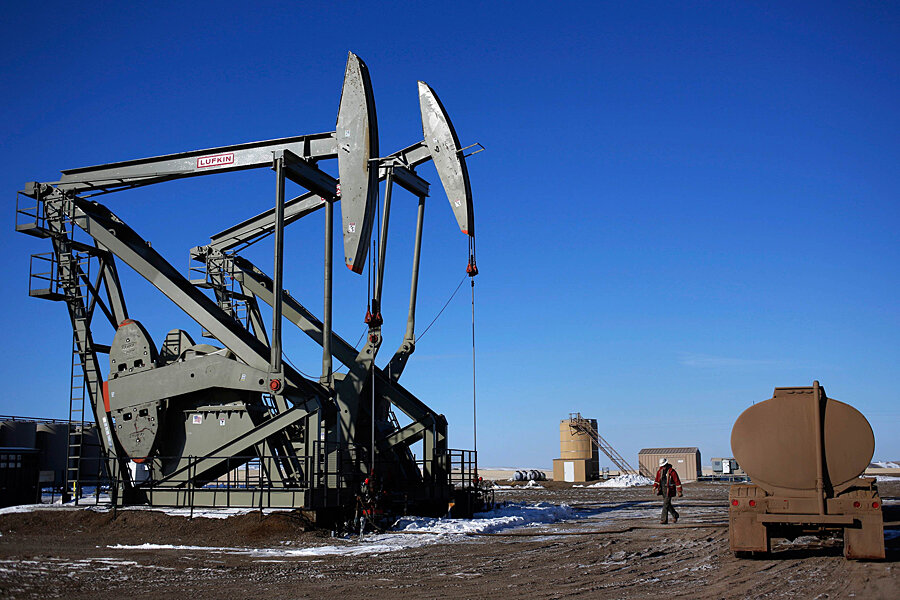Mounting debt for energy firms as oil prices plummet
Loading...
In recent years oil exploration companies have taken on more debt in order to finance their operations. The level of debt in the upstream sector – excluding integrated oil companies like ExxonMobil – hit $199 billion at the end of 2014, a 55 percent increase since 2010, according to the Wall Street Journal.
Loading up on debt made sense when oil prices were high. Fracking new shale wells can be an expensive process, but when oil was averaging over $100 per barrel, the debt load for many firms didn’t seem so burdensome. Now with oil prices falling by more than half in the past six months, the most indebted firms are suddenly in crisis. As Warren Buffet once said, “you only find out who is swimming naked when the tide goes out.”
With an ebbing oil tide, the huge financial problems with several oil firms are starting to become clear for all to see. The WSJ report finds that Quicksilver Resources has a net debt to EBITDA ratio of 12.6. This ratio measures debt to cash flows, with a resulting number that reflects the hypothetical number of years needed to pay back debt. Generally, anything above a 4 or 5 starts to raise red flags. (Related: The Next Decade Will Decide Peak Oil Outcome)
In other words, it is looking pretty unlikely that Quicksilver will be able to emerge from its mountain of debt given the value of the oil and gas it is producing. Other notable companies in trouble include Antero Resources, with a debt/EBITDA ratio of 6.2.
Without a swift rise in oil prices, a wave of write-downs and impairment charges could be about to wash over the industry. An estimated $1.6 trillion in production earnings could go up in smoke if oil prices hold at their current levels. Most of the write-downs will come from small and mid-sized companies who have taken on the most debt. Larger and more diversified companies – the Chevrons, Shells, and ExxonMobils of the world – could write off certain projects and see a dip in earnings, but they will likely weather the storm just fine.
But for smaller companies, today’s oil prices (around $50 per barrel) present an existential threat, even in the short-term. When access to finance gets cut off, the jig could be up. For example, the WSJ notes that one private exploration company, WBH Energy LP, just declared bankruptcy after a lender declined to lend more money. Drilling with debt only works so long as lenders allow you to roll over debt on the belief that they will eventually be paid back. But with oil prices less than half of what they were last summer that is looking less and less likely.
The problem is that oil prices won’t rise until there is a cutback in production. But with more debt to pay off, no company can afford to reduce production now. Indeed, drillers are even more desperate to maintain or boost production so that they can substitute lost value with more volume. (Related: Low Prices Lead To Layoffs In The Oil Patch)
“No one wants to disappoint their shareholders and say we’re cutting production. That’s death,” Judith Dwarkin, director of research at Calgary-based ITG Investment Research, told The Globe and Mail. “So it’s a bit of doing what they can to stay afloat during a difficult period and hoping somebody else shuts in.”
If oil prices don’t rebound soon, that’s exactly what will happen. The weakest won’t be able to keep up the charade, and the industry will experience a big shakeout. That will mean some more bankruptcies and lost oil production, which should begin to push prices back up.
For bigger companies, “capital discipline” is the name of the game, meaning a large cut in capital spending for exploration this year. While that may not affect production in the short-term – there is a backlog of oil wells that are nearing completion – by the end of 2015 production could begin to dip. The U.S. may finally see the shale boom begin to reverse.
By Nick Cunningham of Oilprice.com
More Top Reads From Oilprice.com:
- Obama Kicks The Oil Industry While They Are Down
- Drilling Cutbacks Mean Service Companies Forced to Scrap Rigs
- Low Oil Prices Drive US Rig Count Down
Source: http://oilprice.com/Energy/Energy-General/Mounting-Debt-For-Oil-Drillers.html







